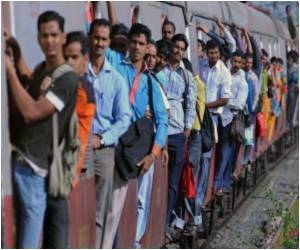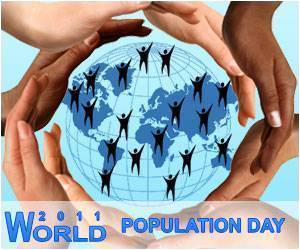
The rising population foreshadows turbulent times ahead with some demographers warning of rapid urbanization, environmental degradation and skyrocketing demand for healthcare, education, resources and jobs.
Some of India's big cities like Kolkata, New Delhi and Mumbai are bursting at the seams from migrants seeking better jobs or as farmers flee droughts, floods and other environmental disasters in a country of 1.2 billion people.
In 1950, globally about 730 million people lived in cities. By 2009, it became nearly 3.5 billion and in the next four decades it will reach 6.3 billion, the U.N. Department of Economic and Social Affairs said in a March 2010 report.
This kind of explosive growth stretches limited resources and infrastructure and places megacities on a collision course with a predicted increase in extreme flooding, storms and rising sea levels from climate change, says U.N. Habitat.
Experts say the lack of coordinated planning is exacerbating the problem. United Nations Population Fund (UNFPA) India representative, Frederika Meijer said urban slums could become a huge problem if India's policy makers did not think through the population problem and plan well in advance.
Advertisement
With the number of people increasing resources are under more strain than ever before.
Advertisement
Experts also state that one of the important policy tool to manage a growing population is to give women access to family planning. Access to education is also important as it motivates women to reduce their fertility and improve their children's health.
A lack of such education has meant that while the overall populations continue to rise in countries such as China and India, the number of women is falling because of a preference for boys leading to deliberate abortions of female babies.
Meijer said the impact of such gender imbalance could be disastrous.
"In 20 years' time there will be far less girls than boys in the marriageable age. That means that a lot of girls will be brought in from states where there are enough girls. So, girls come into a different society and they will be less empowered to deal on an equal terms with their husbands. They are in a strange society, they are brought over. So, for a society as a whole it is difficult but understanding it from a point that it has economic impact, it has ethical impact, it has social impact. So, this individual choice from women, from families is leading to a societal disaster, I would say," she said.
The number of females per 1,000 males in the 0-6 age group fell to 914 from 927 during the past decade, pointing to the continued practice of selective abortions .
However, in all this, there is a silver lining for India.
India's population grew at its slowest pace since independence in the decade to 2011, a trend welcomed by some since it may lead to higher living standards and sounder public finances in a country with a large young population.
Unlike the advanced countries of the West or even Russia and China, where aging or shrinking populations have sparked worries about the impact on economic growth, India has long sought to bring down population growth to a level it can handle.
India stands in contrast to neighboring China, which faces the prospect of not having enough young people to support a fast-aging population.
India's large youth population means it can look forward to a demographic dividend that includes ample supply of labor, rising productivity and plenty of younger workers to fund the pensions of those who have retired.
A decline in population growth means India's national income may break out of the trend of increasing just ahead of population growth, potentially freeing millions of dollars the government now spends on welfare schemes.
Source-ANI








